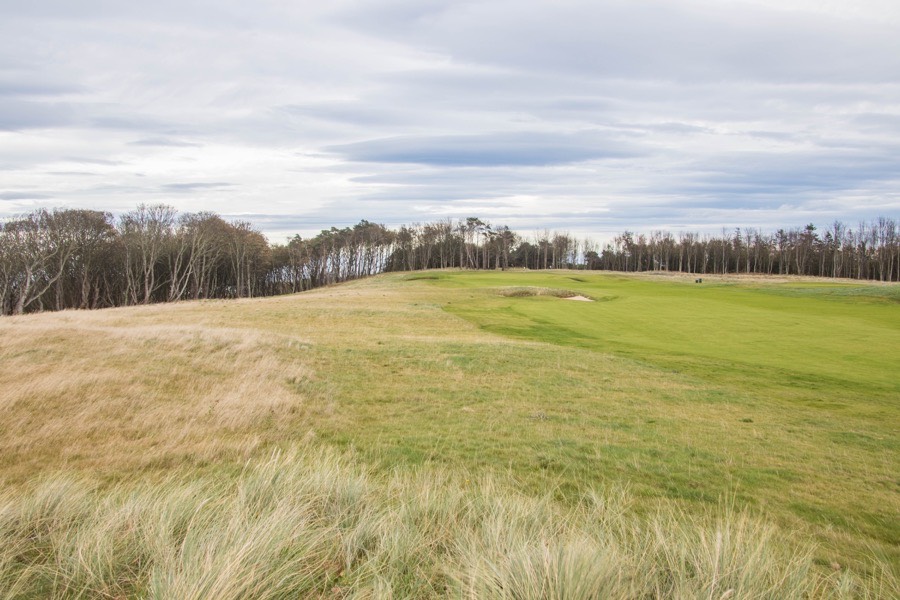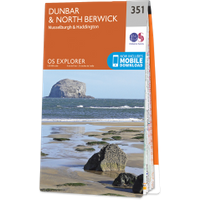

A castle once stood on a motte at Eldbotle, but nothing of it now remains and the exact site of it has been lost.
Eldbotle means “old building” or “old dwelling place” and the site might date back to the early 7th century when a timber hall may have been built here. Later Eldbotle became a royal estate, possibly during the late 10th century when Lothian came under Scottish control.
David I issued two charters at Eldbotle, probably in the 1140s, and Eldbotle continued to be visited by Scottish kings until at least the 1160s with two more charters issued from there between 1153 and 1162 during the reign of Malcolm IV. Another early document from Eldbotle probably dates from late in the reign of William I (1165-1214).
At some time during the 12th century, possibly around 1150, the barony of Dirleton, of which Eldbotle formed part, was granted to the de Vaux family, a wealthy Anglo-Norman family from Rouen in northern France who had come to Scotland under the patronage of David I. John de Vaux, who died in 1187, is said to have built a castle on a motte at Eldbotle, at a similar time to possibly building Castle Tarbet on the nearby island of Fidra.
Fidra was once known as the Isle of Eldbotle and was gifted by John’s son, William de Vaux, to monks from Dryburgh Abbey in 1220, who built a church dedicated to St. Nicholas. The de Vaux family also owned Dirleton Castle which is on record in 1225. From 1240 John’s grandson, also named John de Vaux, began building a large new castle there and that became their main residence. The castle at Eldbotle presumably fell into disrepair, and ultimately obscurity, at this time.
An Ivo of Eldbotle and Hugh son of Geoffrey of Eldbotle are both recorded swearing fealty to Edward I of England in 1296. It may be that one of these refers to Eldbotle on the mainland and the other to Castle Tarbet on the island of Eldbotle.
The barony of Dirleton passed by marriage through the families of Haliburton and Ruthven, by forfeiture to the Erskines and by sale to James Maxwell of Innerwick in 1631. Maxwell was created Earl of Dirletoun and Lord Elbottle in 1646 but the titles became extinct upon his death with no male heirs.
Interestingly Eldbotle is marked on 17th century maps as a notable building or settlement and in 1621 there is a mention of the old castle of Eldbotle, although I haven’t been able to find the original reference and there’s also the possibility that it may actually be referring to Castle Tarbet on the island of Eldbotle (Fidra).

Joan Blaeu, Amsterdam, 1654image courtesy of NLS

John Adair, 1682image courtesy of NLS
In 1663 the barony of Dirleton was bought by John Nisbet who built Archerfield House as his new residence. The lands remained in the Nisbet family, later the Hamilton Nisbets, but was sold in the 1950s and was then bought by the Duke of Hamilton in the 1970s.
The site of the castle is traditionally said to be in what was once Eldbotle Wood, possibly on Eldbotle Ridge or Eldbotle Knowe, although nothing is now visible. Historic Environment Scotland give the grid reference NT 500 855 for Eldbotle Castle, however this is just the centre of Eldbotle Wood.
In 2003 and 2006 archaeological excavations uncovered the remains of a medieval village at Eldbotle centred around NT 4975 8504, approximately 650m to the SSW of where it was once thought to be. Just to the north where the village was previously thought to be located is a plateau of high ground with good defensive qualities. It is elevated above the land to east, south and west and to the north the land drops away sharply to cliffs above Weaklaw Rocks and the beach below. This seems to me to be the most likely site of the old castle of Eldbotle.

Alternative names for Eldbotle Castle
Eilbottle; Elbotil; Elbotl'; Elbottle; Eldbotl; Eldbotle Wood; Eldbottle; Ellebotel; Ellebottl; Old Battel; Old Battell; Old Battle; Oldbattle; Oldbotle; Oldcastle








